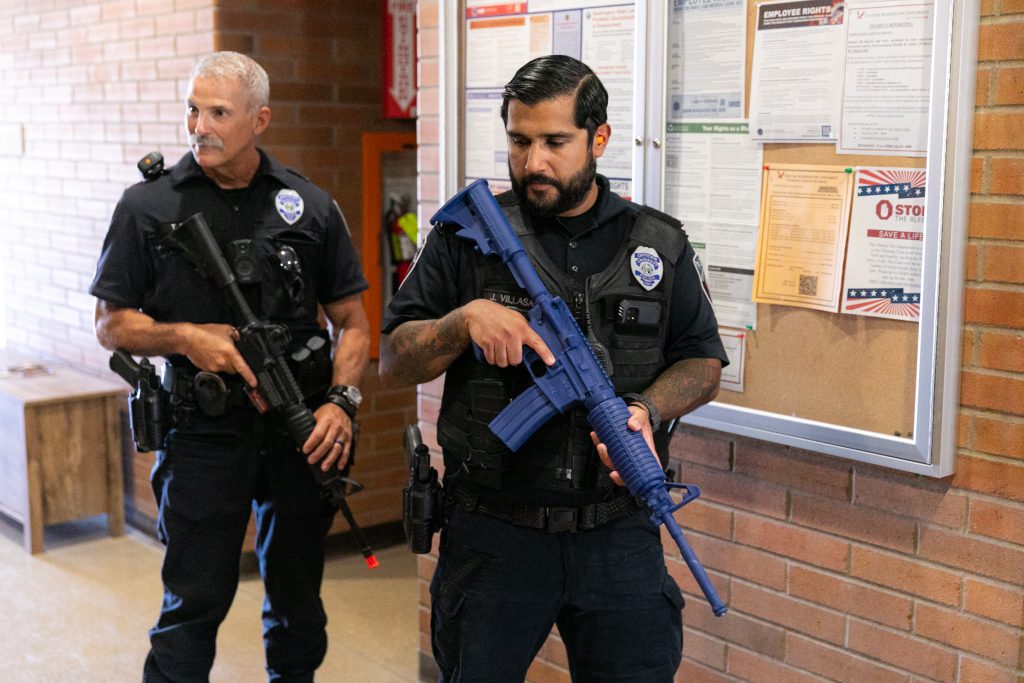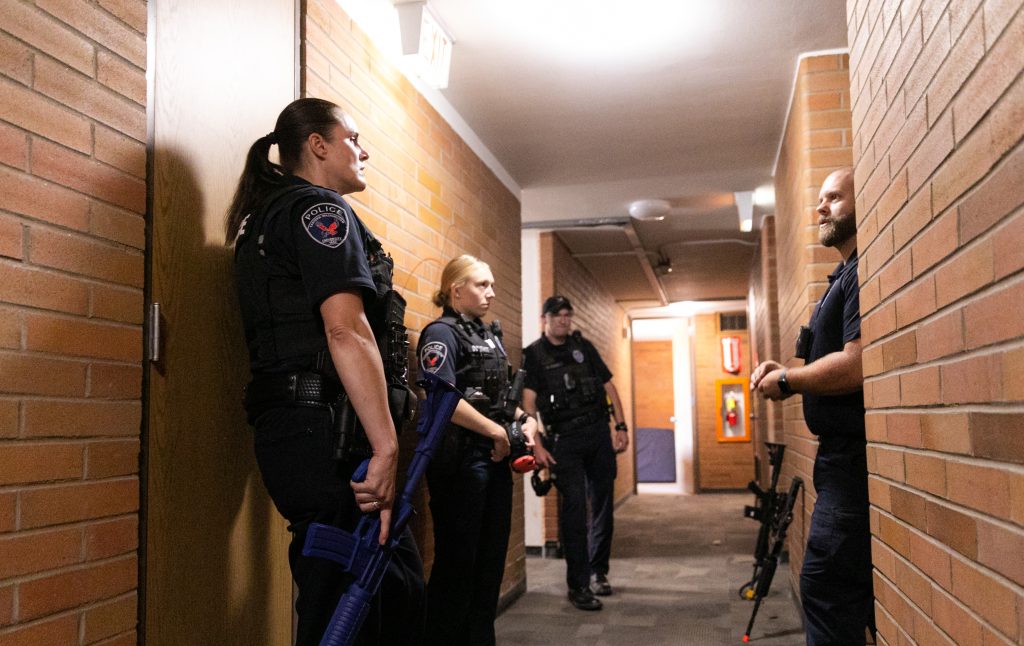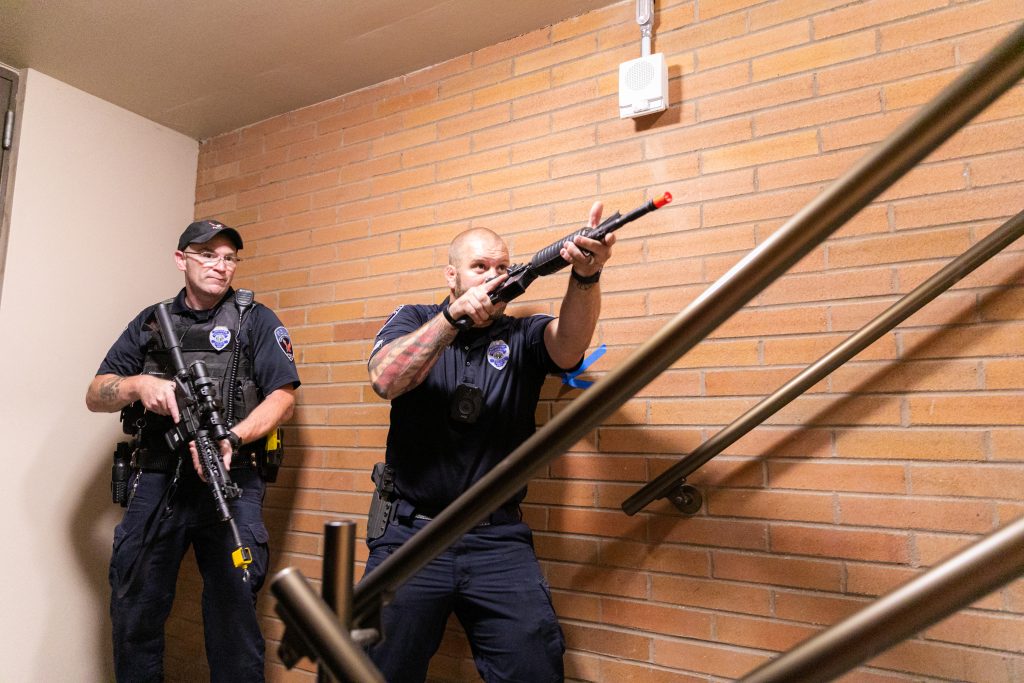On a scorching hot summer Wednesday, a dedicated team from EWU University Police donned heavy gear and did the exhausting but important work of incidence-response training.
Inside Morrison Hall, which formerly housed students, officers led by Sgt. Nick Bickley, firearms and armor instructor, and Officer Greg Karlis, defense tactics instructor, learned the foundational skills necessary to respond to an active shooter — a worse-case-scenario that requires advanced preparation and training.
The men and women in blue did their training outfitted in bullet proof vests — weighing 30-plus pounds —hurriedly scaling up stairways and canvassing hallways as room temperatures climbed. Air conditioning wasn’t part of the plan as the training involved battling back the exhaustion and adrenaline overload that comes along with responding to life-threatening situations.
“We just train to address the threat,” said Jewell Day, chief of police for the university, adding that the officers learn what it takes to advance on their own without having to wait for the team.
Day says the team, which includes 13 officers, trains throughout the year, going through every building on campus to become familiar with the layout in case of emergencies. This year’s training is designed to build foundational skills, exercises that are particularly important in the wake of Covid-19, which put a halt to its annual training exercises.
Additionally, the department has added five new employees over the past two years. Because of the pandemic, this is the first time that those officers have gone through active shooter training.
“We wanted to make sure we are all operating from the same baseline,” Day said.
University officers train to respond individually, in small groups and with the entire team. Their training includes being able to track where a shooter might be located inside a multi-floor building. Unlike television, shots tend to echo in a building and tracking their origins can be a major undertaking.
Some coordinated response moves that look suspenseful in cop shows are actually energy-draining and detrimental in real-life situations. For instance, crouching while canvassing a room and carrying a weapon will wear an officer out sooner that hurrying through hallways with a typical upright gait.
“Move in a way where you are not going to exponentially drain your strength,” Bickley advised the trainees.
Although news accounts of active shooter instances are a regular part of modern life, Day said that the department has trained for this threat for the entire 15 years he has been on campus. When the state of Washington implemented new use-of-force requirements for law enforcement last year, the department was already following those procedures.
“It’s not something that’s new to us. It’s just who we are,” Day says.




